

LECE
BUILDING COMPONENT ENERGY TEST LABORATORY
The Building Component Energy Test Laboratory (LECE) is another of the facilities at the PSA. This laboratory is part of the Energy Efficiency in Building R&D Unit of CIEMAT’s Renewable Energies Division and is managed directly by it. It is a member of the PASLINK EEIG, a network of European laboratories with similar characteristics, which is of economic interest. The laboratory consists of four fully instrumented test cells for testing conventional and passive solar building components and, furthermore, makes use of the excellent infrastructure at the PSA for solar applications.
The purpose of the LECE is to contribute to the knowledge on the energy quality of building elements through experiments determining the thermal properties of closures, such as the global heat transfer coefficient, the solar gain factor or system response times. It also performs other types of tests among which are important because of the climatic conditions in Spain, with regard to ventilation phenomena. The knowledge of those properties can be used to improve building design for increased energy savings without loss of comfort and predicting their thermal behaviour.
LECE activities may be classified as:
- Experimental support for preparation of standards and regulations.
- Experiments in the CIEMAT Energy Efficiency in Building R&D Unit’s research projects.
- Collaboration with and services for building materials and component manufacturers.
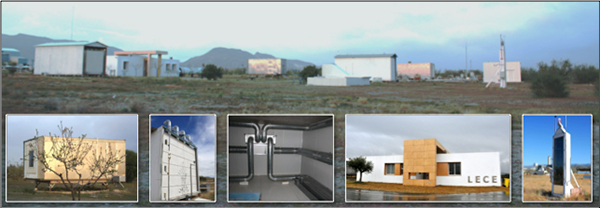
The Test Cell
The LECE performs thermal characterisation testing for the active and passive solar building shell components.
The LECE has four real-scale test cells equipped with conditioning and instrumentation systems for testing construction components under real weather conditions. The test cell consists of a real-size test room. The walls impede any exchange of energy between the test room and outside. One of the original closures can be replaced by the closure to be tested. Once installed, energy exchange is possible only through this closure, which allows it to be characterized.
Testing and research of different types of building components are currently underway in close contact with businesses in the sector, and empirical test procedures for different types of components are being improved. These studies are directed at finding empirical models and development, improvement and optimization of test procedures for the different components. Stationary and dynamic data analysis methods based on system identification techniques are applied to do this. Validation testing of simulation models found from design point and geometry is also possible.
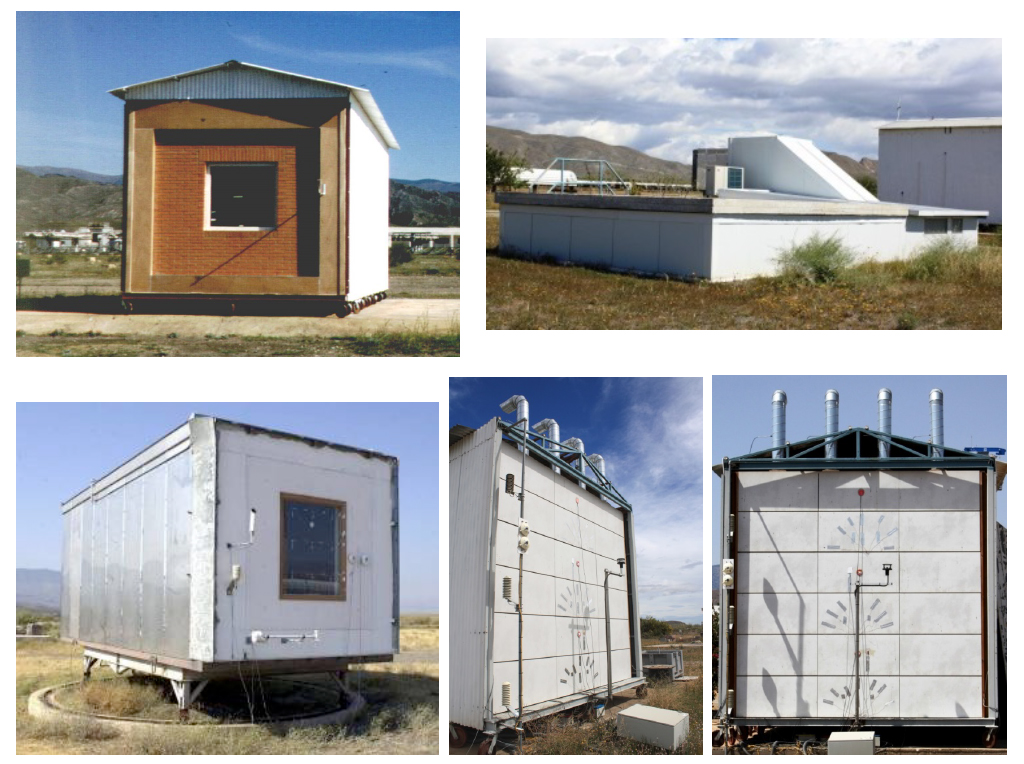
Experimental Analysis of heating and ventilation Techniques
The Analysis of heating and ventilation Techniques concentrates on the study of the phenomena applied to Natural Heating and Cooling of buildings and on developing characterization methodologies. For maximum energy savings from installing these systems in buildings, improvements in them must be optimised and quantified using these techniques for which their detailed modelling is very useful. This can be done using a real-scale construction and testing the systems in the LECE. Testing of such systems as solar chimneys, passive radiating cooling systems, cooling sink systems, etc.
Among these systems is a real-size prototype solar chimney, built in 2003 and monitored since its construction under real weather conditions. This makes it possible to carry out empirical modelling experiments as well as validate theoretical models. These experimental studies can contribute to improving modelling of these systems and also be sued to optimize their implementation in buildings as a passive cooling strategy. Several different studies have been done on this system which have produced various publications and Ph.D. theses.
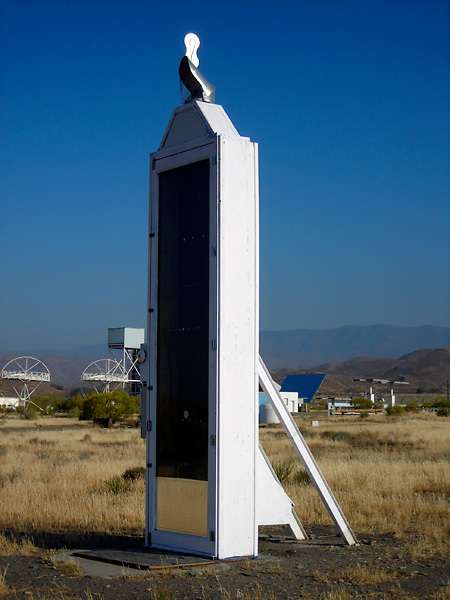
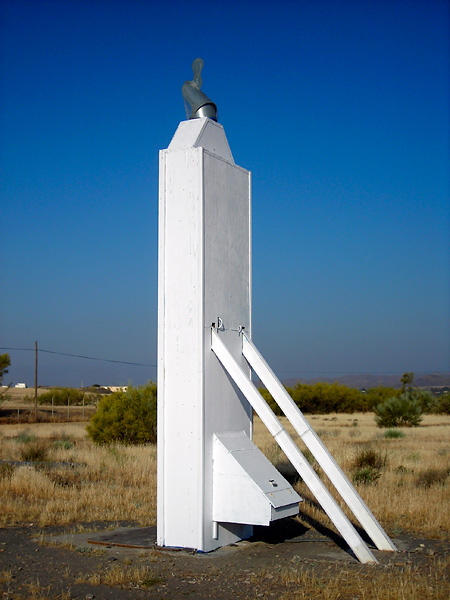
Monozone Building
The monozone building used as the LECE office and workshop was built in 2002. It has an area of 31,1.83 m2 and a height of 3,3.65 m and is built in an area free of other buildings or obstacles around it that could shade it except for twin building located 2 m from its east wall. This building has been monitored since its construction.
Its Simplicity facilitates detailed, exhaustive monitoring and setting specific air conditioning sequences that simplify its analysis, for in-depth development and improving methodologies for experimental building energy evaluation. Several different studies have been carried out on this building that have led to publications and a Ph.D. thesis.
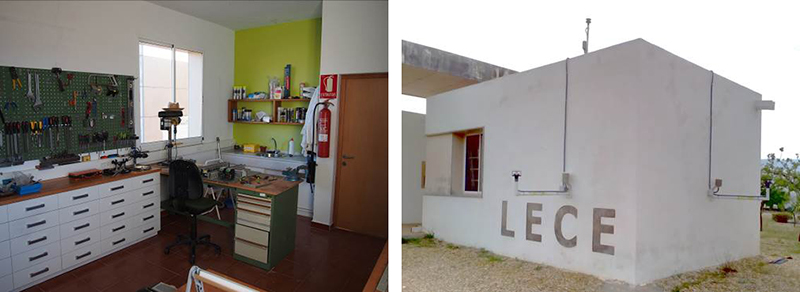
Demonstration Container
The PSE-ARFRISOL Research and Demonstration Container (R&D-C) at the PSA is one of 5 R&D-Cs built in the framework of the Strategic Unique Project on Bioclimatic Architecture and Solar Cooling PSE-ARFRISOL, funded by the MEC and the MICINN (2005-2012) and co-ordinated by the CIEMAT, which is intended to demonstrate that bioclimatic architecture based on the architectural and building design and low-temperature solar energy are adequate basic elements for achieving future energy-efficient building. It is being theoretically analysed and monitored for this (experimentally evaluating the real conditions of use), after having optimized the architectural design and installations in five new and retrofitted symbolic public office buildings built at five different sites with different climate conditions (Almería: University and PSA, Madrid, Soria and Asturias) considered as experimental prototypes (or research and demonstration containers, R&D-C).
The main purpose of the PSE-ARFRISOL is to adapt bioclimatic architecture and solar energy in symbolic public buildings, for thermal conditioning: heating and cooling. An 80 to 90% energy savings can be achieved along with decreased CO2 emissions to air.
The R&D-Cs are completely instrumented with a data acquisition system and are being monitored continuously, which makes them highly valuable experimental facilities in the field of research in Energy Efficiency in Building. The high-quality measurements recorded during monitoring enable research on thermal comfort, building energy evaluation and both active and passive systems integrated in the buildings. Furthermore, it allows experimental building energy evaluation methodologies to be developed and improved under real use conditions. These facilities are unique prototypes extremely useful in experimental studies that are supplemented by theoretical studies.
The PSE-ARFRISOL R&D-C at the PSA is a prototype of a new layout, located in a semiarid climate with wide differences in temperature between day and night. It is longitudinal on one floor with an area of 1,115 m2. The most important bioclimatic strategies, apart from those common to all of the PSE-ARFRISOL R&D-C, are the following:
Passive strategies:
- Differentiated façade design
- Different thickness of insulation depending on orientation
- Solar control through shading on the south façade with marquee
- Solar control by shading of the roof with a double metal pergola which serves as a support for the thermal and convective radiation systems
- Natural ventilation with solar chimneys in offices
- Illumination and north zenith ventilation in distributors
- Underground air-air ducts for pre-air-conditioning
- Semi-underground construction in one of its areas
Active systems:
- Convective radiation systems for night-time cooling
- Heating and ventilation through inductors and under-floor heating
- Solar thermal collectors
- Absorption pumps for solar cooling
- Photovoltaic modules fotovoltaicos
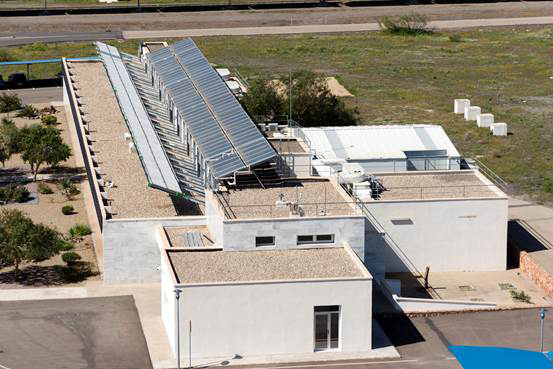
Meteorological devices
The following meteorological sensors are installed: Global, horizontal, and south vertical solar radiation, air temperature, longwave radiation, wind speed and direction, relative humidity and concentration of CO2. A 10 year record of high quality data, including minutely measurements is available for most of these variables.

References
- Books
- Articles in international journals SCI
- Communications to international congresses
- Ph.D. Theses
Interesting links
- Energy Efficiency in Buildings R&D Unit (UiE3). CIEMAT
http://www.ciemat.es/cargarLineaInvestigacion.do?identificador=6&idArea=1 - DYNASTEE Network
www.dynastee.org - OMEGA-CM Programme (In Spanish)
http://projects.ciemat.es/web/omega-cm - ARFRISOL Singular and Strategic Project (PSE-ARFRISOL). In Spanish
www.arfrisol.es - International Energy Agency Energy in Buildings and Communities programme
http://www.iea-ebc.org - International Energy Agency Solar Heating and Cooling programme
http://www.iea-shc.org